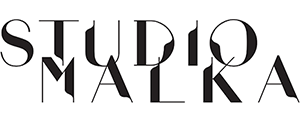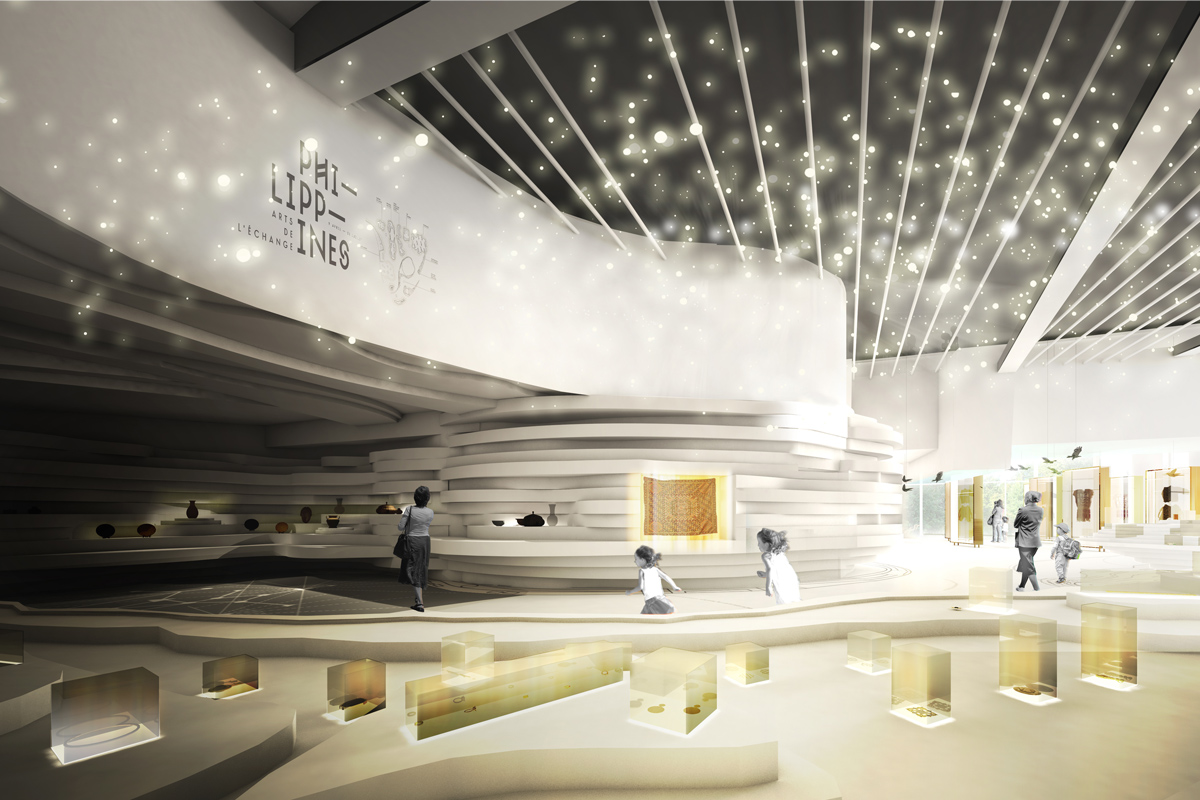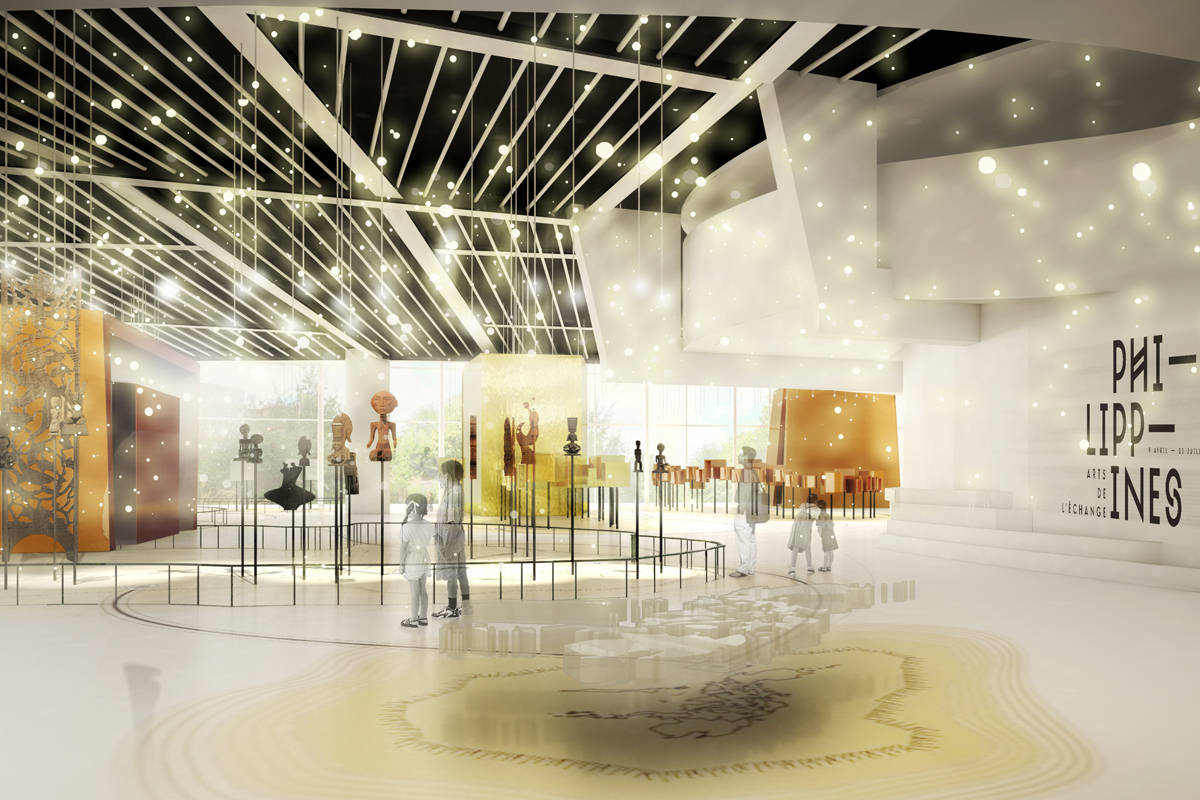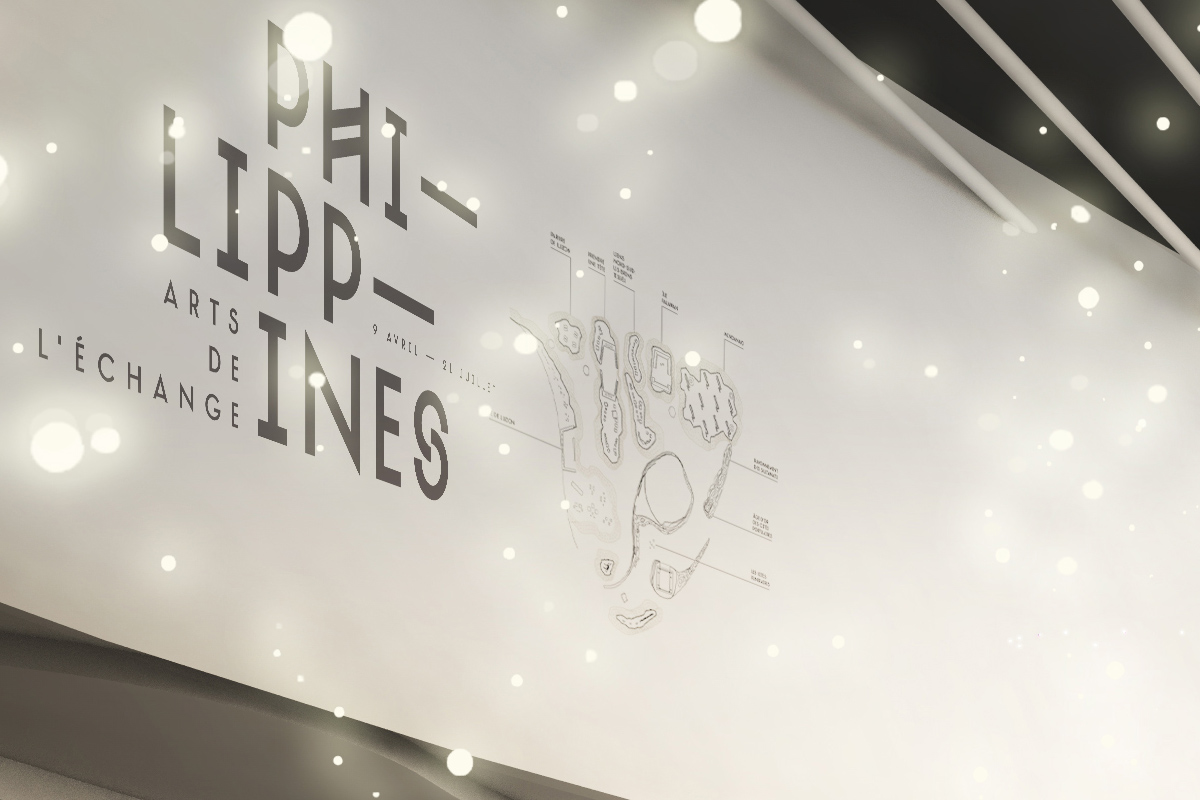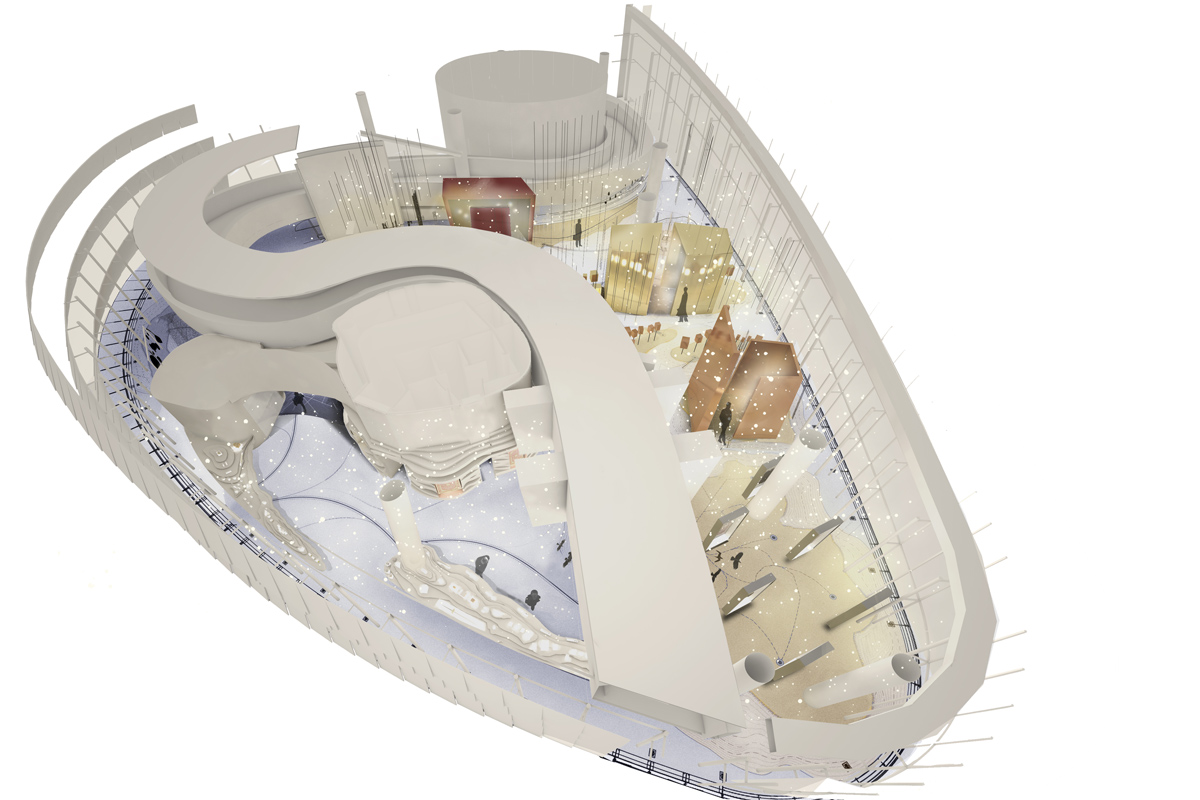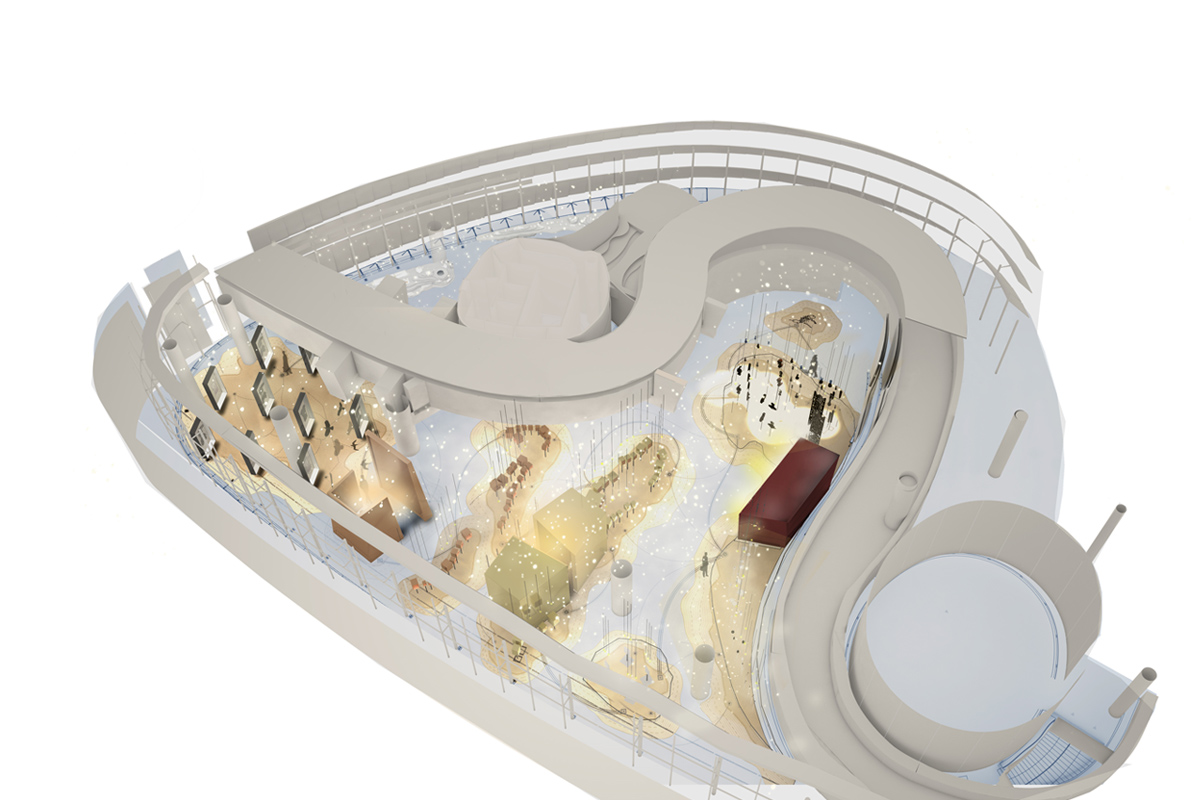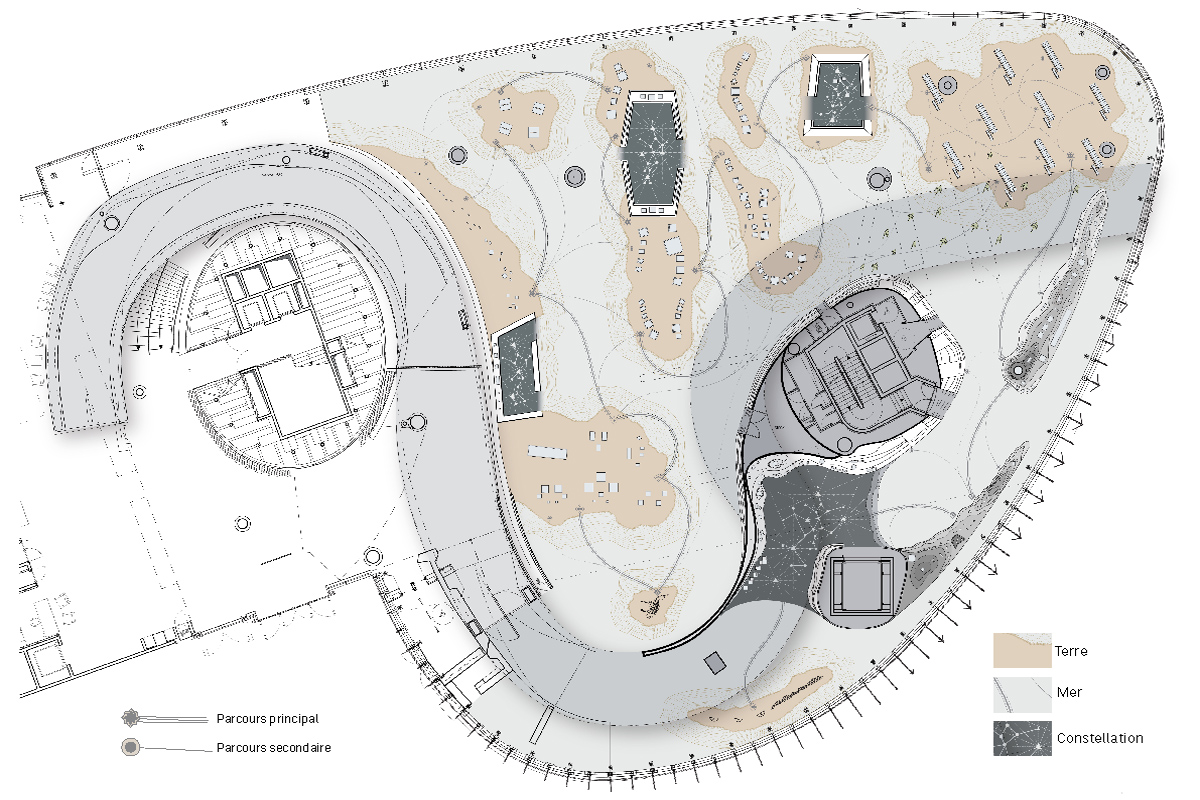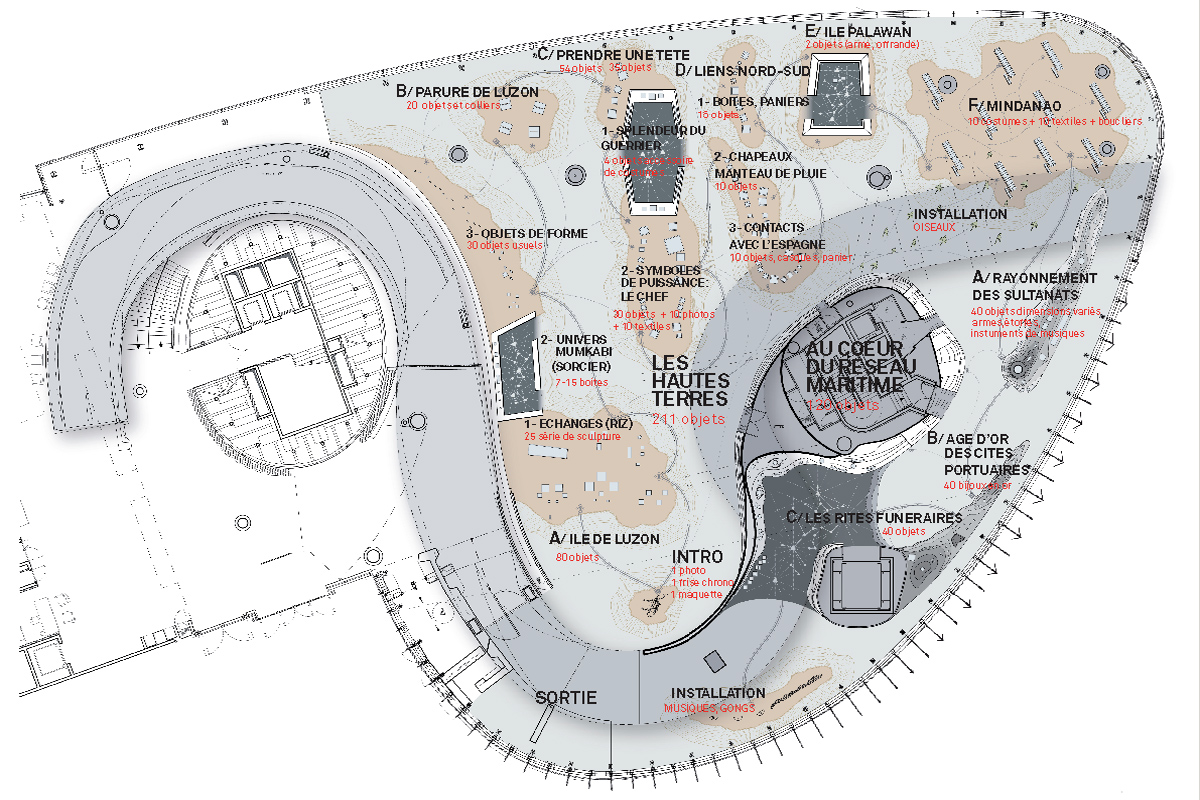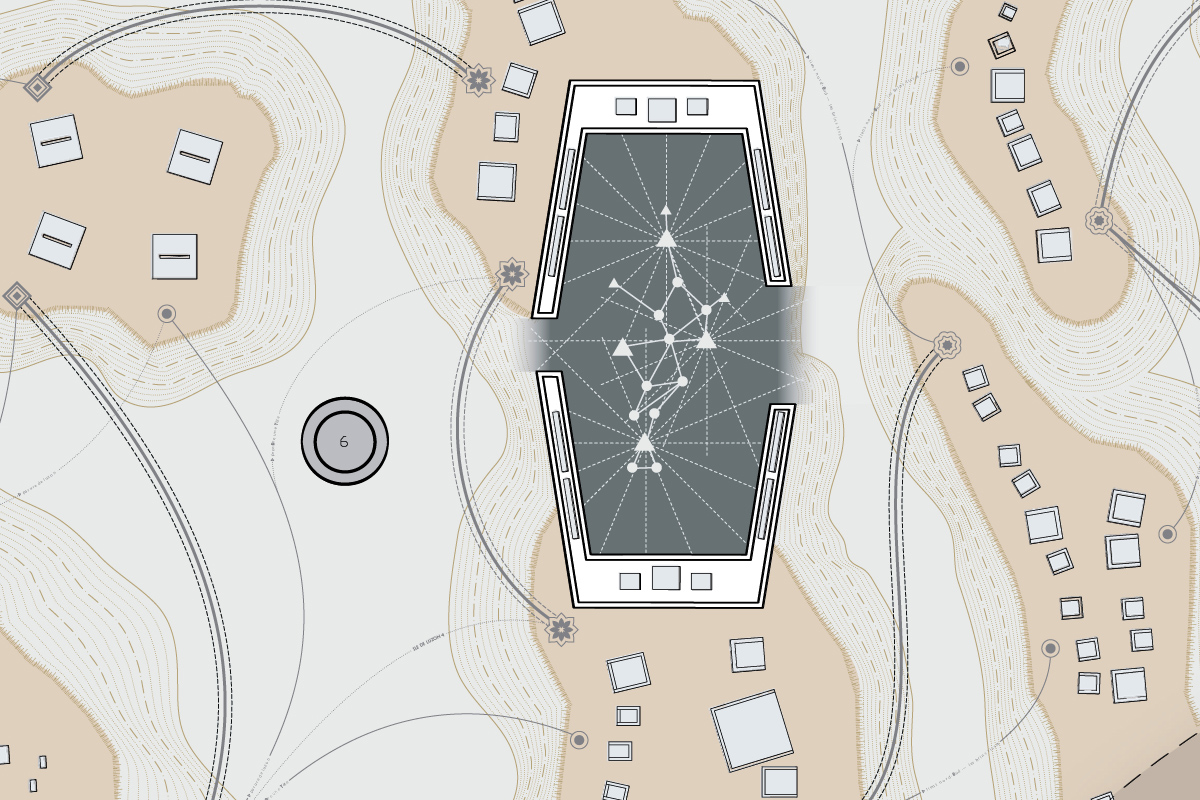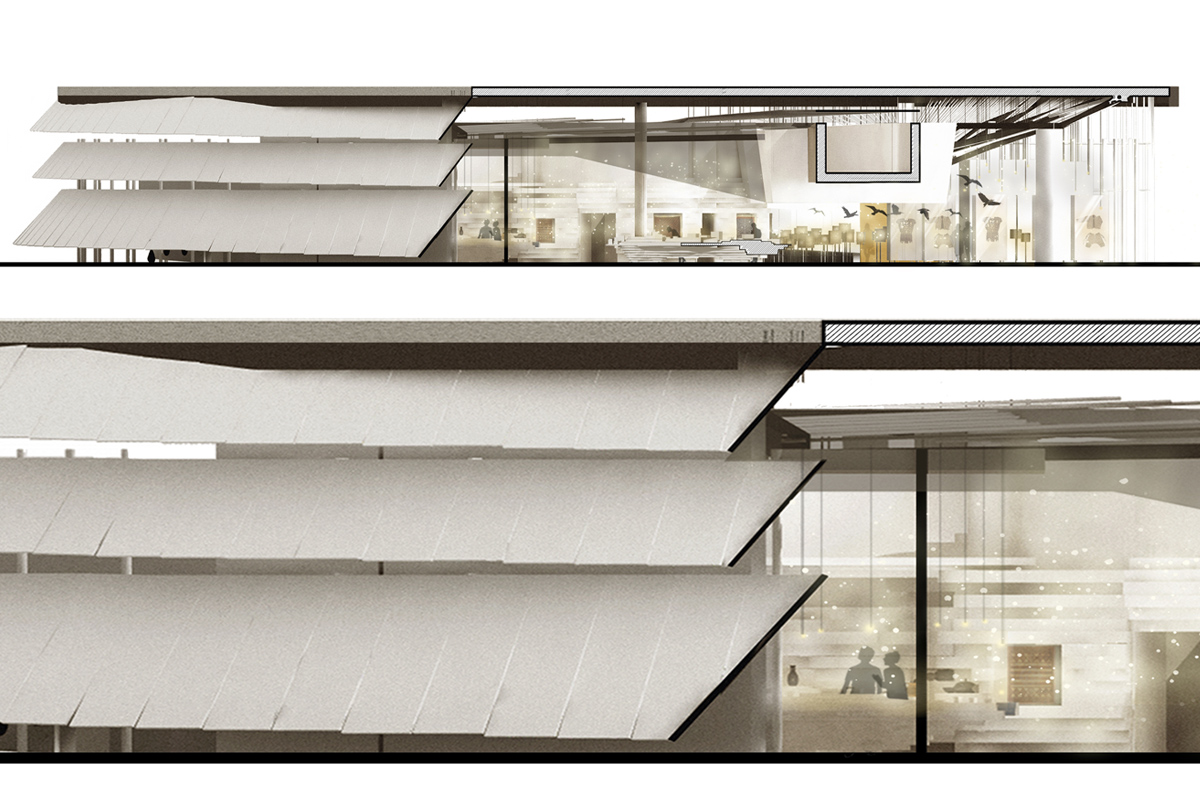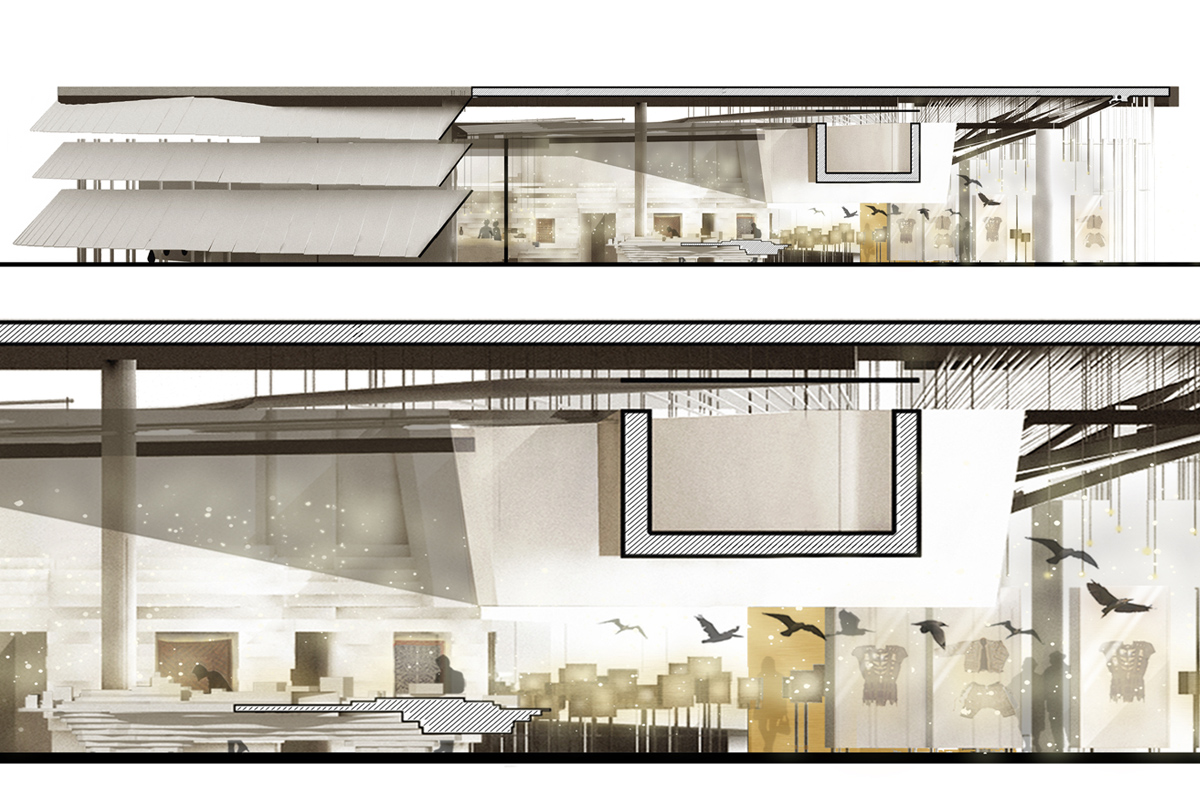QUAI BRANLY MUSEUM
“The outside appears or is revealed at the end of paths… if (the observer) visits instead of seeing, if he transports himself, then the landscape is perceived by a body on hinges, in constant rotation, from high to low, left to right, front to back, we move in vertebrae, a word that describes our movements like incessant spirals in every direction (vertere, to turn). Hence this piece of landscape.”
Michel Serres
Hence this ground that becomes a map, this map that becomes a landscape, this landscape that becomes the place of displacement for the visitor, whether following the shortest trajectory or longer routes, tracing paths of exchanges and reciprocities.
Beings visible today at the meeting of objects, of works by the Filipino people, whose wanderings among mountains and seas (two places where the gaze transports) outline the networks of trade or symbolic relations, magical or poetic.
Thus the exhibition is a complex deductive space, combined from multiple centers and developed by successive echoes of forms and volumes, a space that superimposes, splits, and redoubles its elements, multiplying details to create an all-encompassing environment.
A panoramic form, reclaiming the mobile gaze from the visitor, attracts his attention to transport him to discover and compose this epic.
It all starts with a map of the islands of the Philippines, whose relief is embodied in a model where terraced cultivations become contours … This motif becomes the generator of the ground of the exhibition, its geography, its landscape, reflecting the garden of the museum, its light, its sky, its clouds and shadows.
The ceiling, a multitude of simple LED light (fireflies) suspended from wires meet the objects at a single point, a reinforcement, a sign bathed in natural light (eventually completed).
This meeting is also sonorous, with the presence and pleasure of a multitude of languages. Multiple voices are disseminated in localized instances, but the ensemble is composed, creating a soundscape.
Between objects and lights is a horizon (from the mountains or the sea) where the visitor’s eye is directed towards nodes – the intersections where exchanges and reciprocities, commerce and cities, and cultures and civilizations are born and deployed.
At the path’s first intermission, an installation of birds interrupts the lights. Fireflies take off in flight and lower their voices; languages turn into forests, wind, rain…
This rupture fractures and shakes the landscape of the exhibition. The map becomes display tables and walls, embedding collections of the second sequence (at the heart of a maritime network).
The contours of the map extend to become a ceiling or grotto (excavations) that build a more intimate place, expressing exchanges around objects of funerary rites.
On the one hand, the work of mediation consists in understanding, adapting, interpreting and prioritizing messages for museographic use – to select objects and ideas, and to translate these messages into language and media for the exhibition, with a willingness to share knowledge, tell stories, awaken curiosities, and invite discoveries.
On the other hand, the essential work of mediation, beyond the path of the visitor and the design of media, is the creation of a space that is the place for a real sensorial and emotional experience.
- Type: Scenography
- State: Private Competition
- Year: 2011
- City: PARIS
- Client: Musée du Quai Branly
- Area: 1900m2
- Budget: 700 000 €
- Team: Studio Malka mandatory architects, Ducks Scéno, scénographys, Yann Kersalé light designer, les Graphiquants graphists
